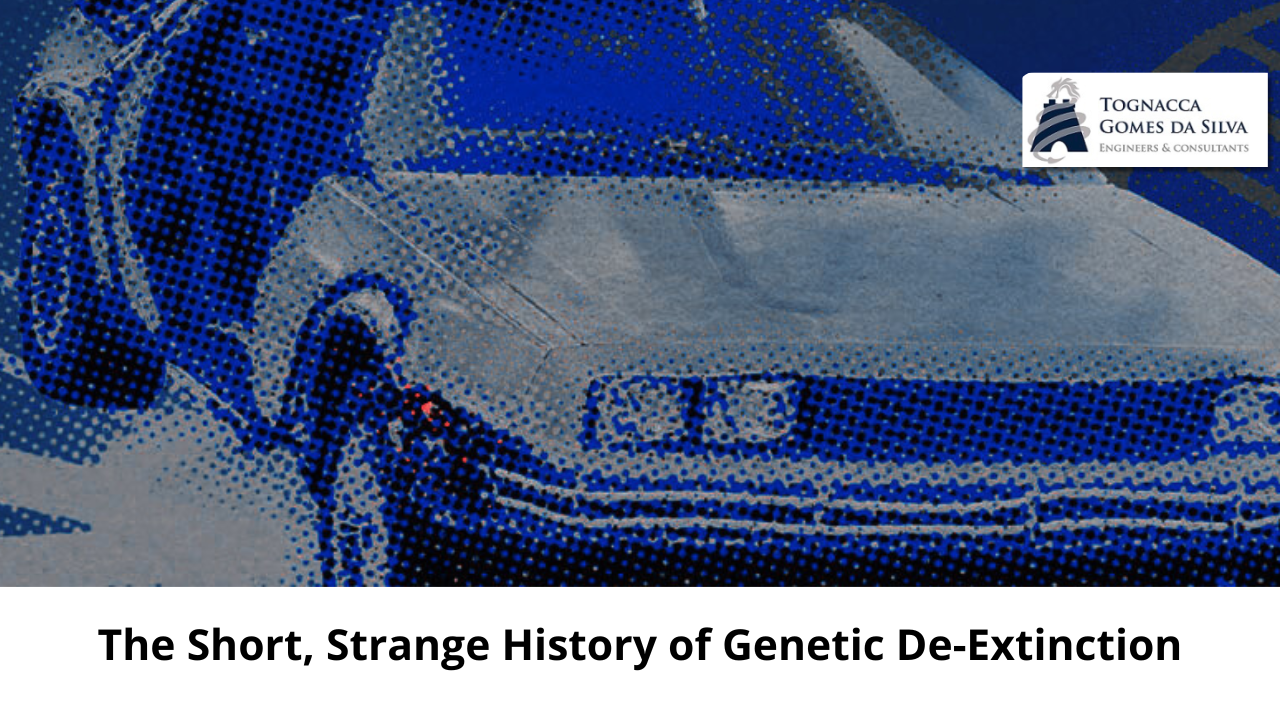In early March, a fascinating story broke about some very furry rodents—so-called “woolly mice”—created as part of an experiment to explore how we might one day resurrect the woolly mammoth.
The idea of bringing back extinct species has gained momentum thanks to advances in ancient DNA sequencing. In recent years, scientists have recovered genetic sequences from the remains of the dodo bird, more than 10,000 prehistoric humans, and frozen mammoths—a species that went extinct around 2000 B.C.
This ancient genetic data is deepening our understanding of the past—for example, by shedding light on interactions between prehistoric humans. But researchers are getting more ambitious. Instead of just reading ancient DNA, they want to use it—by inserting it into living organisms.
Colossal Biosciences, the biotech company behind the woolly mice, says that’s the plan. The ultimate goal is to modify elephants with enough mammoth DNA to create something that resembles the extinct pachyderm.
Of course, there’s still a long way to go. The mice created by Colossal include several genetic changes already known to make mice more furry or long-haired. In other words, the changes were similar to those of mammoths, but they didn’t come from a mammoth. In fact, only a single letter of unique mammoth DNA was added to the mice.
Since this idea is so new and attracting so much attention, I decided it would be useful to create a record of previous attempts to add extinct DNA to living organisms. And since this technology doesn’t yet have a name, let’s give it one: “chronogenetics.”
“Examples are extremely rare these days,” says Ben Novak, chief scientist at Revive & Restore, an organization that applies genetic technologies to conservation efforts. Novak helped me track down examples, and I also got input from Harvard geneticist George Church—who originally conceived the mammoth project—and Beth Shapiro, Colossal’s chief scientist.
The starting point for chronogenetics appears to have come in 2004. That year, scientists in the United States reported that they had partially recreated the deadly 1918 flu virus and used it to infect mice. After a long search, they found samples of the virus in a frozen body in Alaska that had preserved the germ like a time capsule. Eventually, they were able to reconstruct the entire virus—all eight of its genes—and discovered that it was lethal to rodents.
This was an alarming start to the idea of genetic de-extinction. As we know from movies like The Thing, digging up creatures frozen in ice is a terrible idea. Many scientists felt that recovering the 1918 virus—which killed 30 million people—created an unnecessary risk that it might escape, triggering a new outbreak. Viruses are not considered living things.
But for the first example of chronogenetics involving animals, we need wait only until 2008, when Australian researchers Andrew Pask and Marilyn Renfree collected genetic data from a Tasmanian tiger, or thylacine, that had been preserved in a vial of ethanol (the last of these carnivorous marsupials died in a zoo in Hobart in 1936).
The Australians then added a short fragment of the extinct animal’s DNA to mice and showed that it could regulate the activity of another gene. On one level, it was a completely routine study of gene function. Scientists often make genetic changes to mice to see what happens.
The difference here is that they were studying extinct genes, which they estimated accounted for 99 percent of the genetic diversity that ever existed. The researchers used quasi-religious language to describe the origins of DNA.
“The genetic information of an extinct species can be resurrected,” they wrote. “And in doing so, we have restored to life the genetic potential of a fragment of that extinct mammalian genome.”
This brings us to what I believe is the first commercial effort to use extinct genes, which came to our attention in 2016. Synthetic biology company Gingko Bioworks began searching herbariums for specimens of recently extinct flowers, such as one that grew in the lava fields of Maui until the early 1900s. The company then isolated some of the genes responsible for the scent molecules in these flowers.
“We actually inserted the genes into yeast strains and measured the molecules,” says Christina Agapakis, Gingko’s former senior vice president of creative and marketing, who led the project. But Gingko ultimately worked with a “scent artist” to mimic these odors using commercially available scent compounds. This means that the resulting perfumes (which are for sale) use extinct genes as “inspiration,” not as actual ingredients.
This is somewhat similar to the woolly mouse project. Some scientists complained this week that when—or if—Colossal starts chrono-engineering elephants, it won’t actually be able to make all the thousands of genetic changes needed to truly recreate the appearance and behavior of a mammoth. Instead, the result will be “a rough approximation of an extinct creature,” one scientist said.
Agapakis suggests that one shouldn’t be too literal about genetically reclaiming the past. “As a work of art, I saw how the extinct flower made different people feel a deep connection to nature, a sadness and loss for something that was gone forever, and a hope for a different kind of relationship with nature in the future,” she says. “So I think there’s a very powerful and poetic ethical and social component here—a demand that we care for these woolly creatures and our connections to nature more broadly.”
To round out our short list of known chronogenetic efforts, we find just a few more examples. In 2023, a Japanese team added a single mutation found in Neanderthals to mice, to study how it altered their anatomy. And in as-yet-unpublished research, a group at the Carlsberg Laboratory in Copenhagen claims to have inserted a genetic mutation into barley plants after analyzing 2-million-year-old DNA recovered from a mound of sediment in Greenland.
This change, in a light-receptor gene, could make the crop more tolerant of the extremely long days of summer and the long nights of winter in the Arctic.
( fontes: MIT Technology Review)



